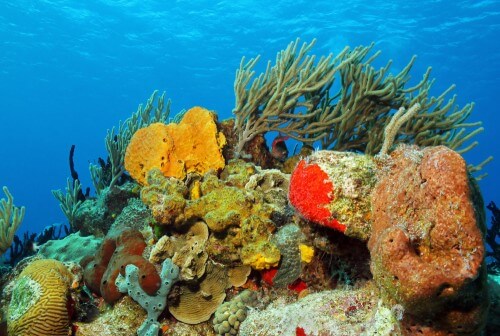New research shows for the first time that corals actively work to obtain more food and more oxygen

By: Ofir Marom
New research shows for the first time that corals actively work to obtain more food and more oxygen.
At first glance, corals appear to be inanimate objects, completely dependent on the ocean currents around them for food and oxygen. But is this really the case? A team of researchers from MIT University in the USA and the Weizmann Institute in Israel performed an experiment in which the movement of water was tested at a distance of tens of micrometers from the surface of the coral. In the experiment, tiny plastic particles were dispersed in the water, near the surface of the coral. After that, the movement of the particles was photographed using a high-speed video camera (up to 1,000 images per second), connected to the microscope. In the analysis of the results, different directions of the water flow were revealed, and the results surprised the researchers. It was found that the water moves on the surface of the coral in eddies. The eddies are not created by chance, but by the coral itself. It does this with the help of millions of hairs, just a few microns long, that cover its surface. By uniform and cyclical movement of these hairs, the coral manages to actively move the water close to it. The presence of these hairs, called cilia, has been known for many years, but until now it was thought that they create a uniform flow parallel to the surface, which may remove sediments but does not help bring food from the depths of the sea to the coral. Research has shown that this is not the case. By mixing the water The coral succeeds in receiving more nutrients and oxygen, as well as removing waste from it, more quickly. In the study, six different types of coral were tested, and it was found that they all work in the same way. Or Shapiro, the Israeli researcher who led the study, says that it is not possible to conclude that all types of coral work in a similar way , but it seems that those who have cilia usually create such currents. The preservation of cilia over 400 million years of evolution indicates that the creation of these micro-eddies has a significant evolutionary advantage.
The results of the research provide a new perspective on the formation process of coral reefs even in places where there is not much movement of water. They also provide information on the interaction between marine microorganisms and coral colonies, a topic that attracts a lot of attention due to the deterioration of coral reefs throughout the world in recent decades. The discovery has the potential to contribute in the medical field as well, since the same mechanism of the cilia hairs also works inside the human body. The coral can be used as a general model to study those hairs, which are often found in places where it is difficult to make observations in real time.
